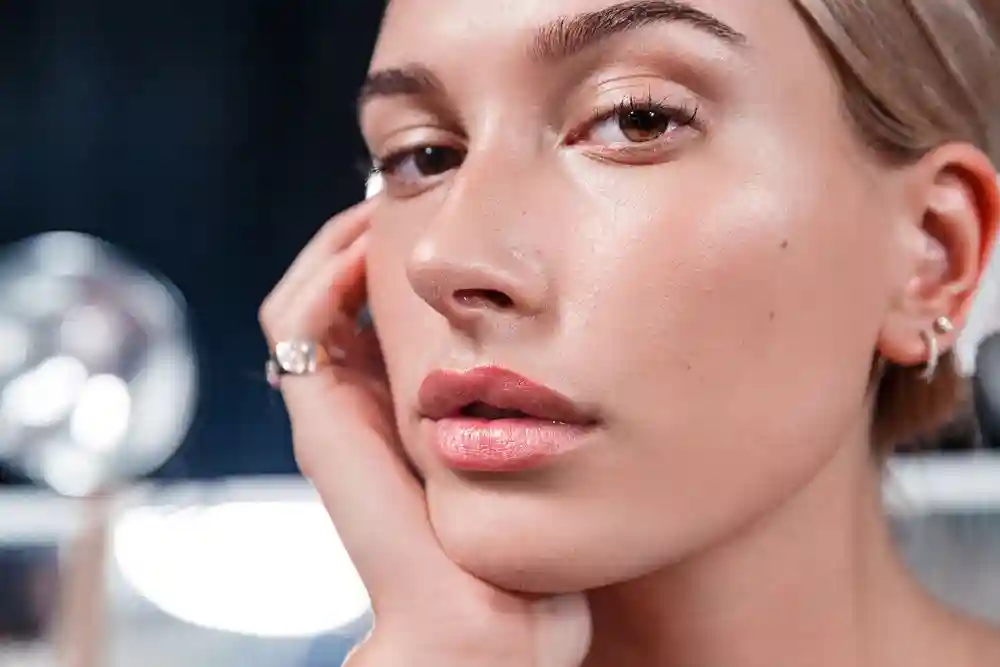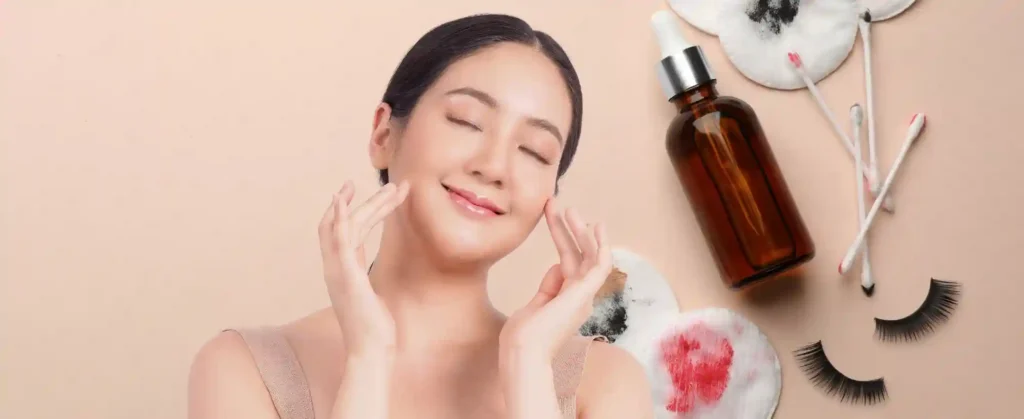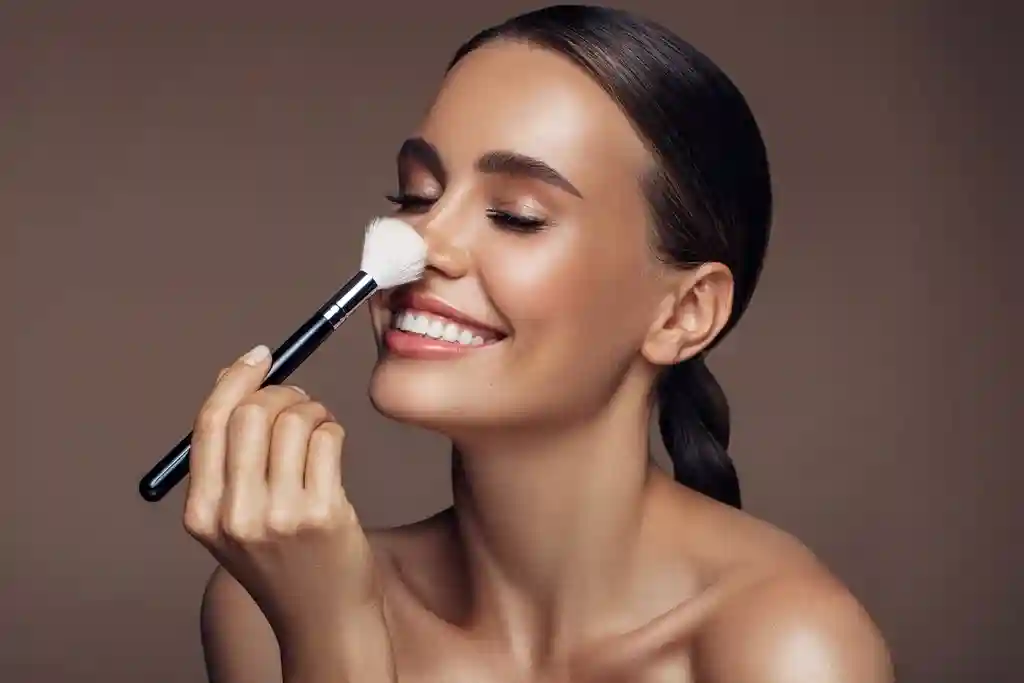Your makeup looked perfect this morning. Now it looks shiny and greasy. This happens to most people every day. Why Does My Makeup Look Oily After a Few Hours?
Many factors cause this problem. Your skin makes oil all day long. Heat makes more oil. Wrong products make it worse.
This guide shows you how to fix oily makeup. You will learn simple tricks that work.
What Makes Makeup Look Oily?

Your skin has tiny oil glands. These glands make sebum every hour. Sebum is natural skin oil.
This oil mixes with your makeup. The result is shiny, greasy-looking skin. Your foundation starts sliding off.
Common causes include:
- Your skin makes too much oil
- You used the wrong primer
- Your foundation formula is too heavy
- The weather is hot and humid
- You skipped important steps
- Your products don’t work together
- You applied too much makeup
Your Skin Type Matters
Oily Skin Problems
Oily skin faces the biggest challenges. Your oil glands work overtime. This makes makeup slide off faster.
Signs of oily skin:
- Shiny face by noon
- Large pores
- Makeup fades quickly
- Frequent breakouts
- Greasy feel
Combination Skin Issues
Combination skin has oily and dry areas. Your T-zone gets oily first. Your cheeks stay normal or dry.
This creates uneven makeup wear. Some areas look perfect. Other areas look greasy.
Dry Skin Surprises
Even dry skin can look oily with makeup. This happens when you use too much moisturizer. Heavy creams make makeup slip.
Dehydrated skin also makes extra oil. Your skin tries to fix the dryness. This backfires with makeup on top.
Product Problems

Wrong Foundation Type
Oil-based foundations add more oil to your skin. They mix with your natural oils. This creates a greasy mess.
Matte foundations work better for oily skin. They absorb oil instead of adding it.
Bad Product Mixing
Some products don’t work together. Water-based and oil-based products separate. This makes your makeup look patchy.
Silicone primers clash with water foundations. The makeup slides right off.
Expired Makeup
Old makeup doesn’t work properly. The formula breaks down over time. Oil control ingredients stop working.
Check expiration dates regularly. Replace old products every 6-12 months.
Weather and Environment
Hot Weather Effects
Heat makes your oil glands work harder. Humidity makes it worse. Your makeup melts in high temperatures.
Air conditioning dries your skin. Your skin makes extra oil to compensate. This creates more shine.
Indoor Factors
Office lighting shows every shiny spot. Stress at work increases oil production. Poor air quality affects your skin.
Heating systems dry out your skin. This triggers more oil production later.
How to Fix Oily Makeup

Start with Clean Skin
Wash your face every morning. Use a gentle cleanser. Remove all leftover products from yesterday.
Pat your skin dry. Don’t rub hard. This irritates your skin and makes more oil.
Use the Right Moisturizer
Every skin type needs moisturizer. Even oily skin needs hydration. Choose lightweight, oil-free formulas.
Apply a thin layer. Let it soak in for 5 minutes. Don’t rush to the next step.
Pick the Perfect Primer
Primer is your makeup’s best friend. It creates a smooth base. Good primer controls oil all day.
Types of primer:
- Mattifying primer for oily skin
- Pore-filling primer for large pores
- Color-correcting primer for redness
- Hydrating primer for dry skin
- Oil-control primer for shine
Apply primer to your whole face. Focus extra on oily areas. Let it set for 2 minutes.
Choose Smart Foundation
The right foundation prevents oily breakthrough. Look for these features:
- Oil-free formula
- Matte or natural finish
- Long-wearing claims
- Buildable coverage
- Transfer-resistant
Apply foundation in thin layers. Build up coverage slowly. Use a damp beauty sponge to blend.
Set Everything with Powder
Powder locks your makeup in place. It absorbs oil throughout the day. Don’t skip this step.
Use translucent powder all over. Press it into your skin. Don’t sweep it on.
Focus extra powder on these areas:
- Forehead
- Nose
- Chin
- Under eyes
- Anywhere you get oily
Finish with Setting Spray
Setting spray is like hairspray for your face. It locks everything together. Your makeup stays put longer.
Hold the bottle 8 inches from your face. Spray in an X pattern. Then spray in a T pattern.
Let it dry completely. Don’t touch your face while it dries.
Quick Fixes During the Day
Oil-Absorbing Papers
Keep blotting papers in your purse. They remove oil without removing makeup. Press gently on shiny areas.
Don’t rub or wipe. Just press and lift. This keeps your makeup intact.
Powder Touch-Ups
Carry a small compact powder. Use it for midday touch-ups. Apply only where you see shine.
Brush off excess powder. You want a natural look, not cakey coverage.
Setting Spray Refresh
A quick spritz of setting spray refreshes everything. It blends any powder you added. Your makeup looks fresh again.
Mistakes That Make Makeup Oily
Using Too Much Product
More product doesn’t mean better coverage. Heavy layers slide off faster. Thin layers last longer.
Build coverage slowly. Add more only where you need it.
Skipping Steps
Every step has a purpose. Skipping primer makes foundation slip. Forgetting powder lets oil break through.
Follow the complete routine every time. Your makeup will last much longer.
Wrong Product Order
Apply products in the right order. Let each layer dry completely. Rushing causes products to mix together.
The correct order:
- Cleanser
- Moisturizer
- Primer
- Foundation
- Concealer
- Powder
- Setting spray
Touching Your Face
Your hands have oils. Touching your face adds more oil to your makeup. This makes the problem worse.
Keep your hands away from your face. Use blotting papers instead of fingers.
Skincare Tips for Better Makeup
Morning Routine
Start each day with clean skin:
- Gentle face wash
- Lightweight moisturizer
- Oil-free sunscreen
- Wait 5 minutes between steps
Evening Routine
Remove everything at night:
- Makeup remover or cleansing oil
- Face wash
- Toner if needed
- Night moisturizer
Weekly Treatments
Help your skin stay balanced:
- Clay mask once a week
- Gentle exfoliation twice a week
- Deep cleaning treatments
- Professional facials monthly
Product Shopping Guide
What to Look For
Read labels carefully. Look for these words:
- Oil-free
- Non-comedogenic
- Matte finish
- Long-wearing
- Transfer-resistant
- Sebum-controlling
What to Avoid
Skip products with these ingredients:
- Heavy oils
- Thick waxes
- Comedogenic ingredients
- Alcohol-based formulas
- Heavily fragranced products
Budget-Friendly Options
Good makeup doesn’t have to cost a lot:
Drugstore Winners:
- Maybelline Fit Me Matte Foundation
- L’Oreal True Match powder
- NYX setting spray
- Revlon PhotoReady primer
- CoverGirl Clean powder
Mid-Range Choices:
- Urban Decay setting spray
- Smashbox primer
- MAC powder
- Too Faced foundation
- Benefit primer
Special Situations
Hot Weather Days
Summer needs extra protection:
- Use waterproof mascara
- Apply extra setting powder
- Carry blotting papers
- Refresh with setting spray
- Choose lighter coverage
Long Days
For 12+ hour wear:
- Double up on primer
- Set every layer with powder
- Use setting spray twice
- Pack touch-up products
- Plan midday refresh
Special Events
Important occasions need special care:
- Do a makeup trial first
- Use your best products
- Apply in good lighting
- Take photos to check coverage
- Pack emergency touch-ups
When to See a Professional
Sometimes you need expert help:
- Your skin suddenly changes
- Products stop working
- Severe acne affects makeup
- Allergic reactions occur
- Nothing seems to work
A dermatologist can help with skin issues. A makeup artist can teach better techniques.
Creating Your Personal Routine
1: Know Your Skin
Figure out your skin type first. Oily, dry, or combination skin needs different approaches.
Test new products one at a time. This shows you what works.
2: Build Your Kit
Start with basics:
- Good primer
- Right foundation
- Setting powder
- Setting spray
- Blotting papers
Add more products slowly. See what helps your specific skin.
3: Practice the Routine
Perfect application takes practice. Try your routine on weekends first. This lets you make mistakes without pressure.
Time yourself. Know how long each step takes. This helps on busy mornings.
4: Track What Works
Keep notes about your makeup. Write down what products you used. Note how long they lasted.
This helps you spot patterns. You’ll learn what works best for your skin.
Conclusion
Success comes from consistency. Use the same routine every day. Your skin will adjust and improve. Don’t change everything at once. Try one new product at a time. Why Does My Makeup Look Oily After a Few Hours? This shows you what really helps. Be patient with your skin. It takes time to see improvements. Stick with your routine for at least 4 weeks. Remember that perfect makeup takes practice. Even professionals had to learn these skills. You will get better with time. Your makeup can look fresh all day.






